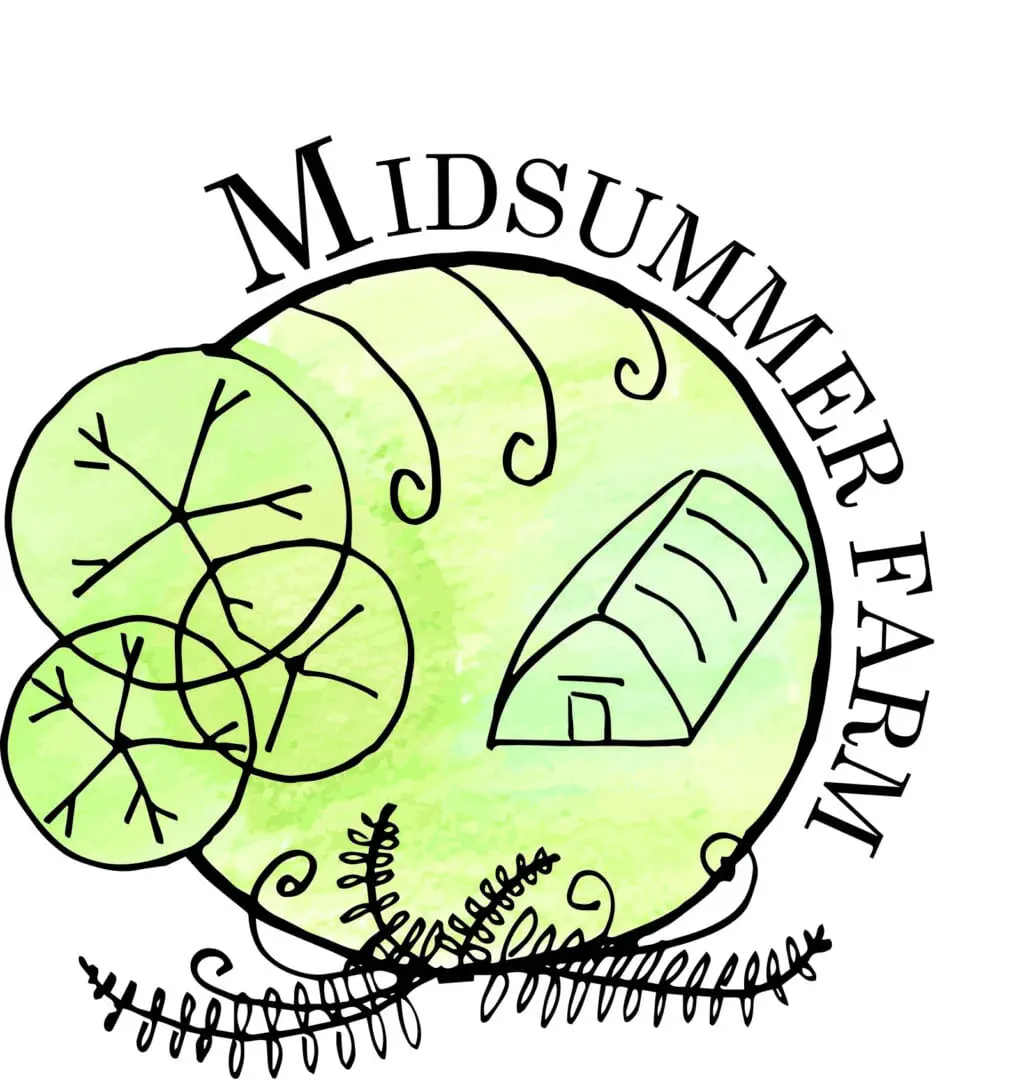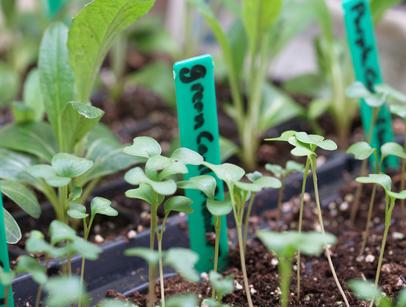
SEED STARTING TIPS
Especially during the tail end of a long winter, starting seeds is a very emotionally healthy thing to do.
Scroll down for a general List of Tips & Tricks for successful seed starting …
Consider taking our Seed Starting Workshop – we now have two versions: A classic, in-person workshop, and an online workshop you can take anytime/anyplace!
Also see: Sourcing Seeds for Your Organic Garden. And new Blog on Scheduling your Seed Starting.
One of the most potent ways to take control of your food and be self–sufficient is the ability to successfully start your own plants from seed! It is a classic skill every human being should be capable of.
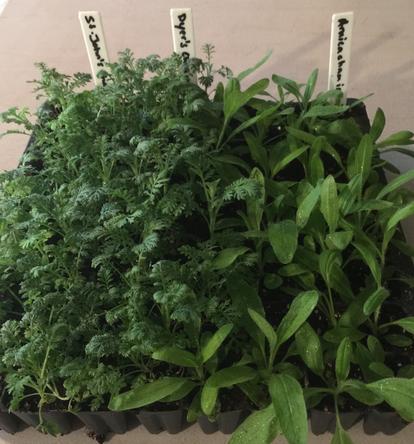
Seed Starting for Your Organic Garden Workshop
For over 10 years, we have been perfecting seed-starting, and I have come to realize that most of what home gardeners are told about it isn’t complete and actually leads to failure or weak, unsatisfying seedlings. In this workshop, we’ll demonstrate and go over how to start your own seeds professionally and successfully. We are also doing this organically and biodynamically – using herbal teas to prevent damping off, using organic nutrients, etc. For anyone planning a big garden, starting your own strong and healthy seedlings is imperative!
Two versions – Click here for more info!
Favorite Seed Starting or Germination Trays. We have two different sizes:
288 (1/2″ cells)
128 (1″ cells)
They available for pickup at the farm for $2 per tray. (Used ones are available as well (free for under 5 or $1 each for over 5 trays).
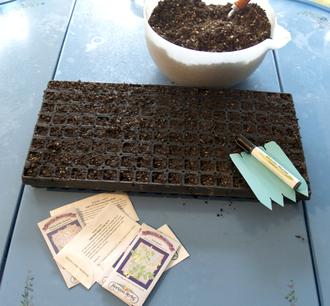
Astrological Planting Scheduling
I usually check my astrological or biodynamic calendar to make sure it is good day for that type of plant.
I use Maria Thun’s Astrological calendar:
My view of “Root Days” and seed starting
If the timing is right out in the garden, these are great days for planting your seeds of radishes, carrots, turnips, beets, etc. Most of our common root crops do not do so well when started early in small pots, but all plants need strong and vital roots, so a Root Day will be a very strong day for planting any seeds.
Root Days are a perfect time for planting the seeds of herbs that are harvested for their roots. Herbs such as echinacea, burdock, elecampane, and marshmallow.
See new Blog Post on Scheduling your Seed Starting!
I used Nancy Bubel’s The New Seed Starters Handbook almost constantly in my first 3 to 4 years of seed starting. I highly recommend it.
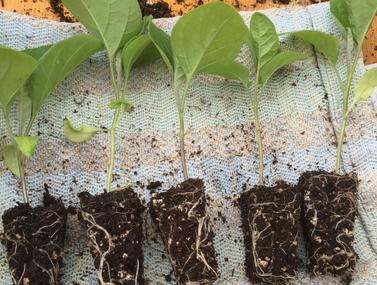
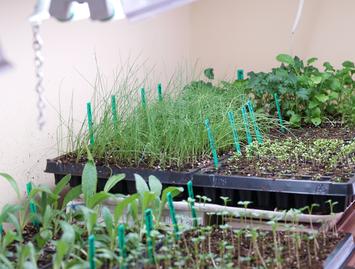
General Tips & Tricks to Healthy Seedlings
I start most of my seeds in my house – I reserve a bedroom and every other flat table space for seed germination at this point in the year. The house is kept at about 65 degrees which is perfect for most seeds to germinate. For seeds that like it particularly warm, I give them a spot under a light or right next to a radiator. Just watch that these warmer trays don’t dry out!
I use regular fluorescent shop lights for my seed germination and the beginning stage of growing out my seedlings. By keeping the light very close to the tops of the seedlings, you can prevent them from getting lanky and weak stems.
Adequate lighting is probably one of the biggest challenges people have with starting their own seedlings. Windows – even south-facing ones – don’t provide enough hours of sunlight at this point in the year and seedlings tend to stretch themselves following the light. You will get the best quality seedlings using an artificial light. You don’t need to invest in an expensive grow light for seedlings. A regular fluorescent shop light is fine. I keep the shop light on a chain that I can adjust according to the height of my seedlings. I keep the light a couple inches above them, so they are well-lighted and don’t feel the need to stretch themselves out. Tin foil can help direct more light down onto the seed trays.
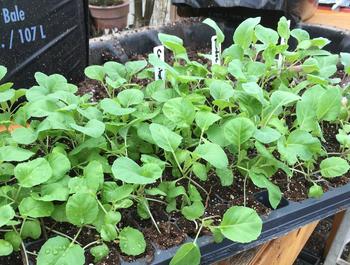
An exercise program for your seedlings
You will get even stronger and sturdier seedlings if you provide them with an exercise program. In nature, a seedling would feel the effects of wind and rain and general natural movement. In your house, they are over-protected, too still, and don’t have the chance to strengthen up.
So first thing, if you bought a seed starting kit that comes with a clear plastic top, throw it away. That plastic top is ok for before your seeds actually germinate to keep the dirt moist. But after your seedlings come up, it just cuts off all airflow. I prefer to use a sheet of plastic wrap that sits on the surface of my germination trays. It is more effective at holding moisture in the soil as my seeds germinate. And it also acts as a part of my exercise program. As the seedlings start to germinate and grow upwards, I leave the plastic wrap sitting on them. This way the young plants have to push a bit harder on the weight of the plastic wrap and thus build up their stem strength.
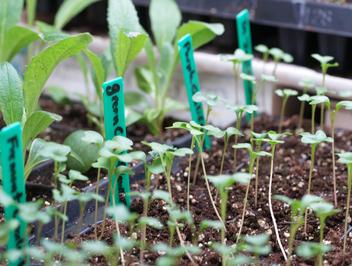
Running a fan on your seedlings will also help in building their strength. It mimics the wind that a seedling in nature would experience. I would recommend an oscillating fan.
I also use a spritzer or spray bottle to do most of my cauliflower and artichoke seedlings watering. That’s another thing you can throw away from your seed starting kit – that bottom tray that holds water that your seedling flat sits in and then suffocates and stagnates. If you do keep the bottom tray for the sake of tidiness, make sure it dries out completely between waterings. Try to avoid having water sit in it at all.
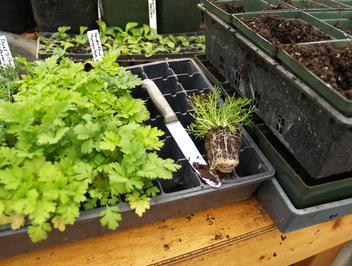
The spritzer bottle is awesome for building up strong seedlings. I also fill my spritzer with chamomile tea which is a wonderful seedling tonic. I spray them so they all move and sway. Anything that gets the stems moving is healthy, even just brushing your hands over them gently.
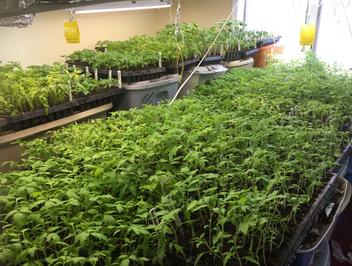
Saving Your Seeds & Seed Age
Seeds do get old. Some species of plants produce seeds that can last for millennia, but most last about 10 years at the most, and that’s at optimal conditions. I keep my seeds at room temperature in big bins out of direct light and away from anything that might fluctuate in temperature. I’ve had lettuces, parsleys, and brassica seeds last over 10 years.
But as the seeds age, they lose potency, You’ll get less germination. When I plant old seeds, I plant extra because I know the germination rate will be lower than it was when the seeds were new.
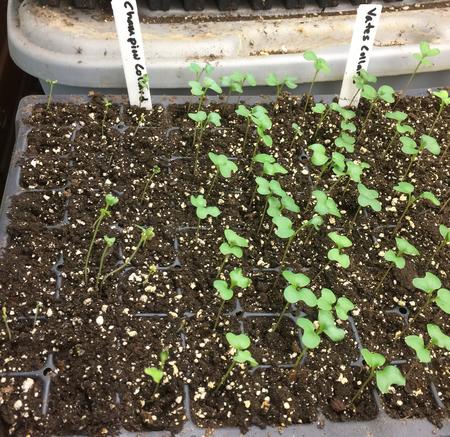
And you may start to notice that the seedlings of old seeds that do germinate aren’t as vibrant either.
Look at this tray of collard green seedlings. The Champions were a big favorite of mine – for 9 years. I was using the same seed packet for 9 years. Last year they started not quite producing as well. And this year, you can see how poor the germination was and how sad the seedlings look.
Next to them, I planted new Vates Collards – they had all the same conditions for germinating as the old Champions. And you can see how all the Vates germinated perfectly and the seedlings are stout and much more healthy-looking.
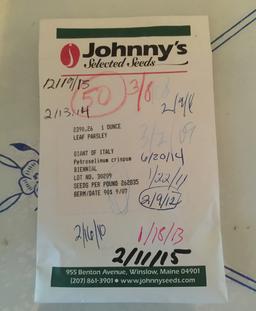
Certain species last a long time, some don’t last more than 1 season. For example, Parsley Seed lasts for years and years and Parsnip Seed usually only last one season. Check out my packet of parsley seed that I finally used up last spring!
Organic Gardening Workshops
We also offer a wide range of other workshops and courses on Organic Gardening.
Visit our Blog for information on
Growing Shoots and Micro-Greens,
Growing Dependable Lettuce in Summer,
and more!

